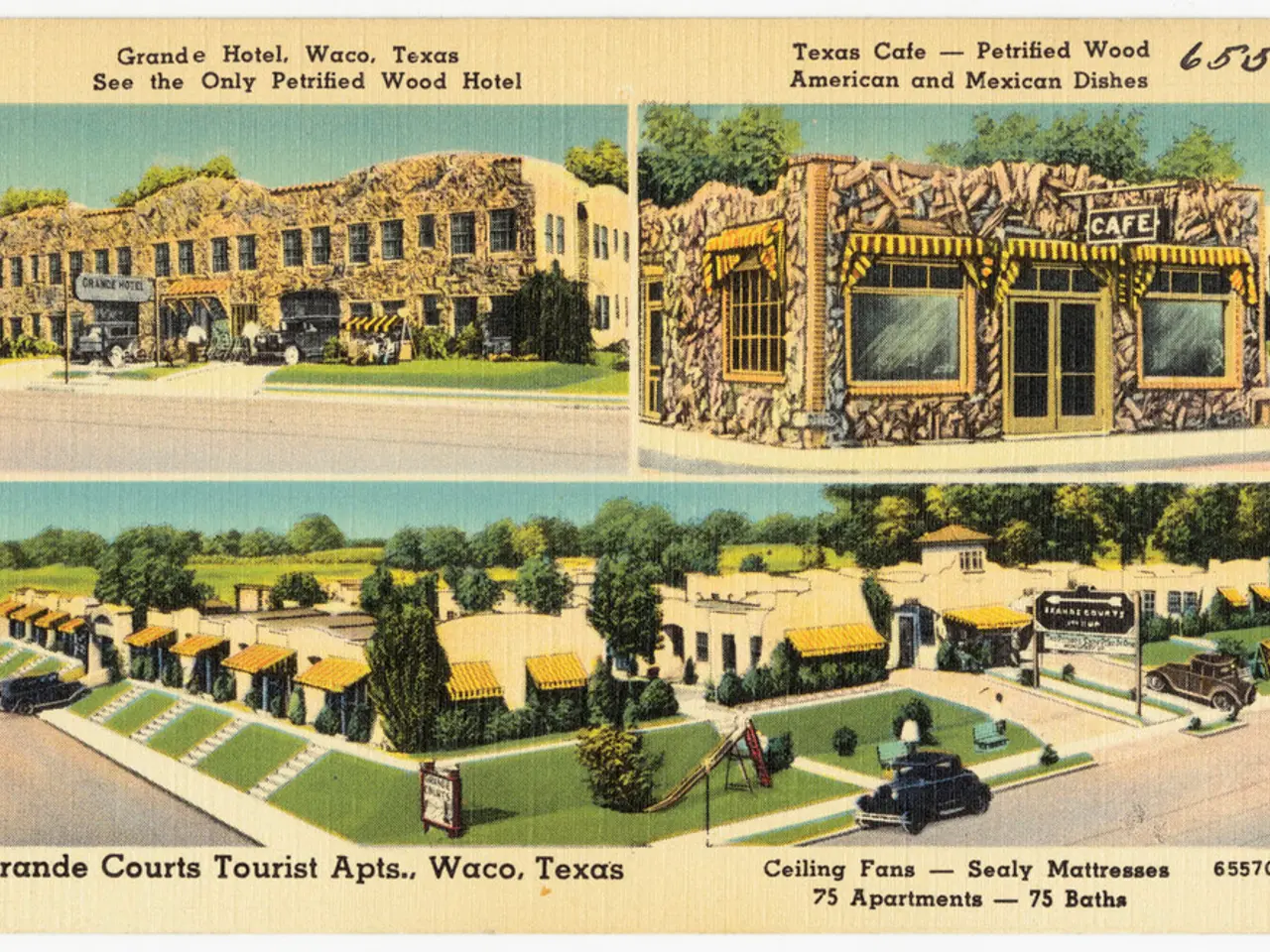Expanding Paver Blocks Market to Soar at USD 8.1 Billion by 2034
The Global Paver Blocks Market is projected to experience significant growth in the coming years, with the market size expected to reach approximately USD 12.4 billion by 2034, growing at a CAGR of 7.24% during this period [1].
The market is currently dominated by concrete-based paver blocks, which offer durability, strength, and cost-effectiveness compared to alternatives like clay or natural stone. The residential sector leads in application, driven by rising construction activities for housing developments and landscaping projects. The infrastructure and municipal sector also commands a significant share, mainly for roads, sidewalks, and public spaces development [1].
The Asia Pacific region currently dominates the global market in paver blocks, with North America and Asia-Pacific remaining key growth hubs. This dominance is attributed to rapid urban expansion, industrialization, and extensive government investments in infrastructure, especially in countries like India, China, and Southeast Asia [1].
In terms of end-use, the infrastructure and municipal sector holds a substantial share, with paver blocks being used in various projects to create sustainable and durable solutions. These projects, such as roads and public spaces, support environmental goals, reducing urban runoff and fostering green construction [1].
The paver block market is poised for steady growth, driven by urbanization, sustainability trends, and government initiatives. Evolving consumer preferences favor aesthetically appealing and eco-friendly materials. In response, businesses such as Cemex have introduced carbon-neutral paver blocks as part of their sustainability initiatives. Boral Limited has also launched eco-friendly paver blocks made from recycled materials, while Brett Landscaping & Building Products has expanded its decorative paver range with innovative designs and colors [1].
To stay competitive, businesses in the paver blocks market should focus on strategic sourcing, R&D for sustainable products, leveraging automation, and expanding into high-growth regions. Astec Industries has integrated automation into its paver production technology for better efficiency, and Beumer Group has introduced advanced concrete paver manufacturing systems with improved energy efficiency [1].
In some regions, such as Coimbatore, India, rising costs for raw materials like blue metal, M Sand, and P Sand have driven up production costs. However, these challenges also present opportunities for innovation and cost optimization [1].
In conclusion, the global paver blocks market is set for substantial growth, with key drivers including urbanization, infrastructure development, and consumer preferences for sustainable and eco-friendly materials. Businesses in the market should focus on strategic sourcing, R&D for sustainable products, leveraging automation, and expanding into high-growth regions to stay competitive.
[1] Various sources, including market research reports and industry analysis.
Sports can often be a popular recreational activity in housing developments, providing residents with opportunities for exercise and communal gatherings. The growing trend of incorporating green spaces into these projects may further encourage participation in outdoor activities, fostering healthier, more connected communities.
Moreover, the use of paver blocks in sports facilities, such as tennis courts, basketball courts, and playgrounds, ensures durable, cost-effective surfaces that can withstand heavy usage, promoting continued growth and engagement in sports participation.








